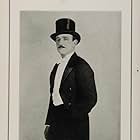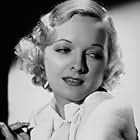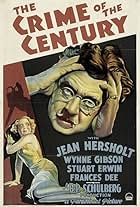A southern spy during the Civil War, he must try to capture a shipment of gold. His task is complicated by the two sisters, the Indians and a firing squad.A southern spy during the Civil War, he must try to capture a shipment of gold. His task is complicated by the two sisters, the Indians and a firing squad.A southern spy during the Civil War, he must try to capture a shipment of gold. His task is complicated by the two sisters, the Indians and a firing squad.
- Director
- Writers
- Stars
- Awards
- 1 win total
Jim Blackwell
- servant who knows Jack
- (uncredited)
- Director
- Writers
- All cast & crew
- Production, box office & more at IMDbPro
Featured reviews
It's very hard, even for a German count, to be aristocratic throughout the entire day; that is to say, maintain without a blink a rigid pose as well as a haughty glance and accordingly, watch transcendent Teutonic silent pictures.
Having this in mind together with the fact that laughing is a capital sin for a genuine German count, one must allow for the fact that aristocratic flesh is weak and from time to time is prone to the sin of privately watching some of those superficial American comedies such as "Hands Up!" directed by Herr Clarence G. Badger in the silent year of 1926.
The film is set during the American civil war. Herr President Lincoln has problems for financing the war but pretty soon he will have excellent news regarding this: a gold mine in Nevada has been discovered so the longhaired North will have financial support in order to defeat the conservative South. Of course, Herr President Lincoln puts his best man in charge of such an important mission.
But meanwhile a Southern soldier ( Herr Raymond Griffith ) is sent to the West as a spy in order to retrieve the gold for the South ( this time the American East was forgotten for this picture ). It's not an easy mission for the Southern spy; he must face many difficulties, the most terrible being that two Northern sisters will fall in love with him.
"Hands Up!" was stars the not well-known American comedian, Herr Raymond Griffith, who was almost forgotten since the old silent days although recently his few surviving films are screened again for the joy of silent rarities admirers.
This Herr Graf can define Herr Griffith's style as an imitation of earlier famous silent comedians (especially Max Linder to whom he bears a physical resemblance as well). gobbling up all these in order to create a not very original character, although effective in comic terms.
In "Hands Up!" there are certainly many hilarious moments wherein Herr Griffith's character shines particularly, focusing every gag and the picture itself around his persona, a character that it seems extrapolated, inserted in a wrong context ( a top hat modernistic gentleman in the American civil war ) adding in this way a surreal, weird atmosphere to this silent comedy.
"Hands Up!" works pretty well for Herr Griffith even though his antics are somewhat predictable and not very original.
And now, if you'll allow me, I must temporarily take my leave because this German Count must look for gold in his mines of the Ruhr.
Herr Graf Ferdinand Von Galitzien http://ferdinandvongalitzien.blogspot.com
Having this in mind together with the fact that laughing is a capital sin for a genuine German count, one must allow for the fact that aristocratic flesh is weak and from time to time is prone to the sin of privately watching some of those superficial American comedies such as "Hands Up!" directed by Herr Clarence G. Badger in the silent year of 1926.
The film is set during the American civil war. Herr President Lincoln has problems for financing the war but pretty soon he will have excellent news regarding this: a gold mine in Nevada has been discovered so the longhaired North will have financial support in order to defeat the conservative South. Of course, Herr President Lincoln puts his best man in charge of such an important mission.
But meanwhile a Southern soldier ( Herr Raymond Griffith ) is sent to the West as a spy in order to retrieve the gold for the South ( this time the American East was forgotten for this picture ). It's not an easy mission for the Southern spy; he must face many difficulties, the most terrible being that two Northern sisters will fall in love with him.
"Hands Up!" was stars the not well-known American comedian, Herr Raymond Griffith, who was almost forgotten since the old silent days although recently his few surviving films are screened again for the joy of silent rarities admirers.
This Herr Graf can define Herr Griffith's style as an imitation of earlier famous silent comedians (especially Max Linder to whom he bears a physical resemblance as well). gobbling up all these in order to create a not very original character, although effective in comic terms.
In "Hands Up!" there are certainly many hilarious moments wherein Herr Griffith's character shines particularly, focusing every gag and the picture itself around his persona, a character that it seems extrapolated, inserted in a wrong context ( a top hat modernistic gentleman in the American civil war ) adding in this way a surreal, weird atmosphere to this silent comedy.
"Hands Up!" works pretty well for Herr Griffith even though his antics are somewhat predictable and not very original.
And now, if you'll allow me, I must temporarily take my leave because this German Count must look for gold in his mines of the Ruhr.
Herr Graf Ferdinand Von Galitzien http://ferdinandvongalitzien.blogspot.com
I thoroughly recommend this 70 minute feature which showcases Raymond Griffith as a Southern spy attempting to thwart a gold shipment to the North from Nevada. His style of acting is quite sophisticated, reminding me of an American Max Linder. He plays comedy and pathos with delicious layers of understatement followed by bravado. He is truly a forgotten actor in the great tradition of American comedy. How fun it would have been to have seen him in a Lubitsch film.
There appear to be two versions of this film, a full 70-minute version and a half-hour short entitled Injun Trouble. The latter does also seem to have been released as I have seen contemporary reviews which appear to be discussing the short version. It also appears to be the version by the sole unfavourable reviewer here.
An unidentified Raymond Griffith short, A King for a Day (Eén dag koning) appears in the Dutch EYE collection. It is a story of a king and his lookalike in an imaginary kingdom and, although EYE dates it as 1920, it seems to be more likely that it appeared in 1922, when there was a whole spate of pseudo-parodies following the success of Metro's Prisoner of Zenda (others are the Christie comedy Choose Your Weapons and Semon's A Pair of Kings). There were later parodies, Laurel's Rupert of Heehaw (following Selznick's release of the sequel to Prisoner of Zenda, Rupert of Hentzau, in 1923) and Langdon's Soldier Man 1926 (which also contains a neat clin d'oeil towards the 1926 Barrymore film The Sea Beast) but none that I know of before 1922. The film is very similar in plot to Semon's A Pair of Kings and is a rather mediocre slapstick comedy, although there is evidently missing footage. The production company is unknown.
An unidentified Raymond Griffith short, A King for a Day (Eén dag koning) appears in the Dutch EYE collection. It is a story of a king and his lookalike in an imaginary kingdom and, although EYE dates it as 1920, it seems to be more likely that it appeared in 1922, when there was a whole spate of pseudo-parodies following the success of Metro's Prisoner of Zenda (others are the Christie comedy Choose Your Weapons and Semon's A Pair of Kings). There were later parodies, Laurel's Rupert of Heehaw (following Selznick's release of the sequel to Prisoner of Zenda, Rupert of Hentzau, in 1923) and Langdon's Soldier Man 1926 (which also contains a neat clin d'oeil towards the 1926 Barrymore film The Sea Beast) but none that I know of before 1922. The film is very similar in plot to Semon's A Pair of Kings and is a rather mediocre slapstick comedy, although there is evidently missing footage. The production company is unknown.
Many years ago at a film festival, I saw a beautiful print of Paths to Paradise and recall laughing uproariously. . This film – not so much. Of course seeing an excellent print of a film on a big screen and with an audience is quite a different experience from seeing a poorer quality print on a small television set with no audience. So I should probably make a certain allowance when evaluating Hands Up! Griffith plays a likable rogue type who is a spy for the confederacy trying to hijack a wagon load of gold. This gold could give the South the winning edge in the Civil War. A number of the comedy routines are brilliant - most notably the firing squad scene and the bumblebee in the coach scene But the story line between the comedy routines was slow going – his romance with the two sisters was numbing, although it did lead to an unexpected and amusing ending. His trademark top hat was used effectively throughout the movie especially in the mine scene. A little crisp editing in some of scenes could have helped the movie. That said, Griffith did have a flair and manner about him that was quite engaging. We are just lucky to have this film at all; it's a shame that so little of Griffith's work remains.
"Injun Trouble" is a very difficult film to rate--so I'll skip a numerical rating for this one. This is because the ending to the film was missing--a common problem with old silent films. Because these movies were made on nitrate film stock, which tends to deteriorate quickly over time, many old films only exist in bits and pieces. So, having almost all of "Injun Trouble" is actually rather fortunate.
The film begins with a Confederate officer being given orders to go undercover as a spy. His task is to prevent the Union from gaining access to gold from their mines in Nevada. However, this plot soon vanishes and the film seems to meander terribly. First, the hero is inexplicably captured and allowed to escape by the Union troops and ultimately he is captured by a group of Indians--who he teaches how to dance in the final portion of the film.
While the film has some amusing moments, for the most part it's terribly unfunny and episodic. To make things worse, the Indians are total idiots--and ride their horses around the covered wagon repeatedly---allowing them to be easily shot. Overall, it's a film best suited for die-hard fans of silent comedies---all others would probably find the film a bit dull.
The film begins with a Confederate officer being given orders to go undercover as a spy. His task is to prevent the Union from gaining access to gold from their mines in Nevada. However, this plot soon vanishes and the film seems to meander terribly. First, the hero is inexplicably captured and allowed to escape by the Union troops and ultimately he is captured by a group of Indians--who he teaches how to dance in the final portion of the film.
While the film has some amusing moments, for the most part it's terribly unfunny and episodic. To make things worse, the Indians are total idiots--and ride their horses around the covered wagon repeatedly---allowing them to be easily shot. Overall, it's a film best suited for die-hard fans of silent comedies---all others would probably find the film a bit dull.
Did you know
- TriviaAlthough seldom referred to today, this movie was in fact one of the most popular comedies of its time, far more successful critically and economically than Buster Keaton's Civil War comedy The General (1926).
- ConnectionsReferenced in Salut l'artiste (1973)
Details
- Runtime
- 1h(60 min)
- Sound mix
- Aspect ratio
- 1.33 : 1
Contribute to this page
Suggest an edit or add missing content























